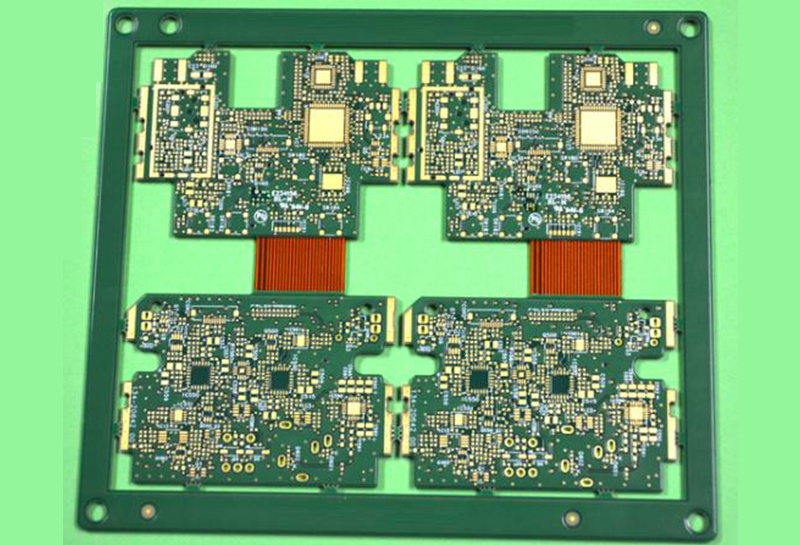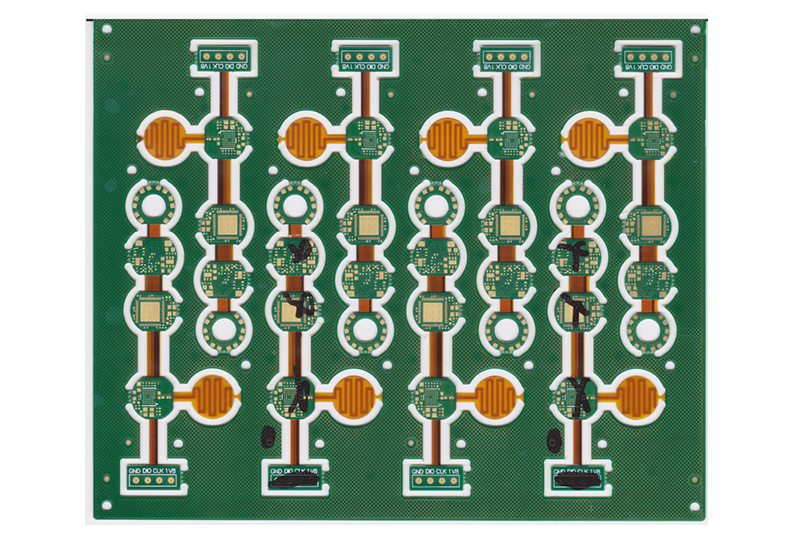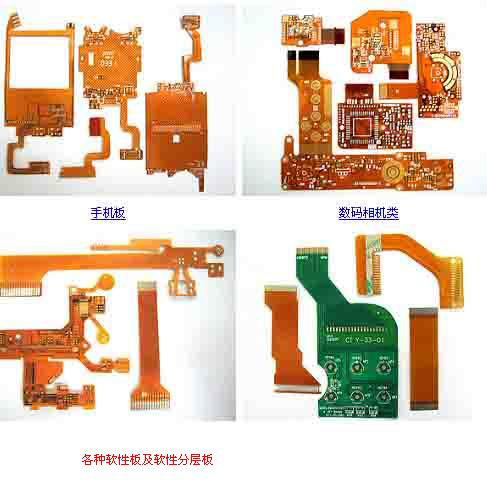Blog detail
Detailed Full Process Flow of FPC (Flexible Circuit Board) Production (Part 1)
Release time:
2022-06-21 13:46
FPC (Flexible Circuit Board) production and manufacturing detailed full step steps (double-layer FPC, HDI FPC, hard soft fusion FPC, longer production process and more standardized)
Detailed Full Process Flow of FPC (Flexible Circuit Board) Production (Part 1)
FPC (Flexible Circuit Board) production and manufacturing detailed full step steps (double-layer FPC, HDI FPC, hard soft fusion FPC, longer production process and more standardized)
1. FPC production and processing process flow:
1.1 Double panel production process: cutting → drilling → PTH → electroplating process → pre solution → sticking dry film → fitting → exposure → developer solution → pattern electroplating process → peeling → pre solution → sticking dry film → fitting exposure → developer solution → etching process → peeling → surface solution → sticking blocking film → suppression → condensation → nickel deposition → identifier printing → cutting → electrical measurement → shear pressure → full inspection → packaging → delivery
1.2 Manufacturing process of solar panels on both sides: cutting → drilling → applying dry film → aligning → exposing → developing solution → etching processing → peeling → surface solution → applying blocking film → suppression → condensation → surface solution → nickel deposition → marking → cutting → electrical measurement → shear pressure → full inspection → packaging → delivery
2. Cutting materials
2.1. Grasping of raw material number NDIR050513HJY: D → Two sides, R → Injection mold processing copper, 05 → PI thickness 0.5mil, i.e. 12.5um, 05 → Copper thickness 18um, 13 → Adhesive thickness 13um. XSIE101020TLC: S → Front and back, E → Electrolytic nickel, 10 → PI thickness 25um, 10 → Copper thickness 35um, 20 → Adhesive thickness 20um. CI0512NL: (covering film): 05 → PI thickness 12.5um, 12 → Adhesive thickness 12.5um Total thickness: 25um
2.2. Optimization of Production Process Quality and Flow
A. Staff should wear gloves and finger protection to prevent the copper surface from oxidizing due to contact with sweat in their hands
B. Moderate shelving method to avoid wrinkles
C. Do not cut off center, and do not damage the punching and testing holes when cutting by hand
D. The quality of raw materials should not have wrinkles, stains, or heavy air oxidation on the surface. The cut raw materials should not have burrs, glue leaks, etc 3 openings
3.1 Bag sealing: Select the back cover plate → assemble the board → apply adhesive tape → mark the arrow icon (logo)
3.1.1 Bag sealing regulations: 30 solar panels on both sides, 6 double-sided panels, and 15 packages
3.1.2 Key functions of rear cover plate:
A: Avoid squeezing injuries caused by drilling machines and working pressure feet on the surface of raw materials
B: Make it easy for the drill tip management office to accurately locate and prevent deviation of the hole opening area
C: Take away the heat generated by friction between Fried Dough Twists bit and hole wall, and reduce the twisting of Fried Dough Twists bit
3.2 Hole opening: 3.2.1 Steps: Operation → Lower the board → Add the operation process → Set the main parameters → Hole opening → Self inspection and self correction → IPQA inspection → Batch production → Transfer to the next production process
3.2.2. Control method of drill needle: a. application frequency control b. identification and detection method of new Fried Dough Twists drill bit
3.3. Quality Supervision Points:
a. Moderate drilling belt
b. For red film, determine the hole location, total number, and appropriate amount
Establish whether the hole is completely open or closed
d. The appearance should not have safety hazards such as copper warping or burrs
3.4. Common safety hazards
3.4.1 Needle breakage:
a. The operation process of the drilling machine is not good b. The Fried Dough Twists bit has problems c. The cutting tool is too fast
3.4.2 Burrs a. Incorrect back cover, protective layer, and cushion block b. Electrostatic adsorption
4. Electroplating process
4.1 Basic elements and functions of PTH: PTH refers to the entire process of organic chemical electroplating of copper or self catalytic reaction rate electroplating of copper based on the self catalytic reaction rate of the plating solution (palladium and copper molecular formulas are used as metal catalysts), which reflects the oxidation-reduction reaction and causes iodine ions to deposit on the pore walls and copper surfaces that have undergone specific solutions, without the need for additional current
4.2 PHT steps: Alkali degreasing → Water cleaning → Micro corrosion → Water cleaning → Water cleaning → Pre soaking → Specificity → Water cleaning → Water cleaning → Acceleration → Water cleaning → Water cleaning → Organic chemical copper → Water cleaning
4.3 Solution to the generally weak PTH situation
4.3.1. Copper free pores: The specific palladium adsorption and accumulation are not very good B Speed up tank: The concentration value of the speed up agent is incorrect Organic chemical copper: The temperature is too low, which makes it difficult to carry out chemical changes at a slower rate; The composition of the tank solution is incorrect
4.3.2. There are particles and unevenness on the hole wall:
The organic chemical tank has particles and uneven accumulation of copper powder, which is filtered by an open belt filter press B board has burrs on its own hole wall
4.3.3. Surface blackening: The composition of the organic chemical tank is incorrect (the NaOH concentration value is too high)
4.4 Electroplating Copper Electroplating copper improves the uniformity of the hole coating, ensuring that the coating thickness of all sections (holes and all coatings around the riser) meets certain requirements
4.4.1 Electroplating Process Standard Manipulation a Selection of Current Intensity b Specification and Model of Electroplating Process Occupation c Coating Thickness Regulations d Electroplating Process Time Manipulation
4.4.1 Quality Supervision
1. Continuity: Self inspection and self correction QC full inspection, using a 40x magnifying glass to check whether the hole wall is completely adhered and penetrated with electroplated copper
2. Surface quality: The copper surface should not have burnt, peeled, granular, needle holes, or weak black spots
3 Adhesive properties: After bonding with 3M tape at any point outside the board, it should be vertically attached without falling off
5. Passing through
5.1 Dry film is attached to the board, and after exposure to the developing solution, it passes through the base to form. Throughout the entire process, the dry film plays a crucial role in image transfer and has the function of maintenance throughout the entire etching process
5.2 Key components of dry film:
PE, Light induction coil inhibitor, PET. Here, PE and PET only have the functions of maintenance and isolation. Light induction coil inhibitor includes: connector, starting and stopping agent, independent, adhesion and vulcanization promoter, and dye
5.3 Work regulations stipulate that a should maintain the elimination of dry film and surface, b should have flatness, and there should be no bubbles or wrinkles The adhesion is ensured according to regulations, and the sealing performance is greatly improved




Previous



